A major side effect of using large doses of certain anabolic steroids, including testosterone, is the conversion of testosterone into estrogen. It’s accomplished through the action of the ubiquitous enzyme aromatase, which is found in various body tissues, including liver, muscle, brain and particularly peripheral fat stores, such as arms and legs. Under normal conditions only a small amount—0.3 percent—of daily testosterone output in men is converted into estrogen. The picture changes, however, when someone takes large doses of testosterone or testosterone-derivative drugs, such as anabolic steroids. Under those cirumstances, levels of estradiol, the most active of the three known estrogens, can reach heights in men greater than those found in normal women.
Not all anabolic steroid drugs are subject to aromatization. Those based on the DHT structure are not. Other steroids, such as the 19-nortestosterone drugs represented by Deca-Durabolin, are subject to only about 20 percent conversion, although they do interact with progesterone receptors and can so cause a type of gynecomastia, or male breast development.
From a bodybuilding standpoint, excess estrogen has both good and bad effects. Among the good effects are maintenance of beneficial levels of high-density-lipoprotein cholesterol, which protects against cardiovascular disease. In women, estrogen aids exercise recovery and is involved in muscle repair. The same may be true in men, although that hasn’t been clearly established. Estrogen is also involved in maintaining androgen cell receptors, which interact with testosterone and anabolic steroids. The more androgen receptors, the better the drugs work. Finally, estrogen plays a role in the release of growth hormone and insulinlike growth factor 1. Women show higher pulsatile releases of GH during exercise because of their higher estrogen counts.
On the negative side, excess estrogen is directly associated with gynecomastia. Basically, the glandular tissue in male breasts comes alive when the balance of estrogen to testosterone is raised in favor of estrogen.
Just how bad gyno can get depends on genetic factors, such as the number of estrogen receptors in a man’s breasts (or should I say pecs?). Generally speaking, that trait is inherited from your mother, so if she had large breasts—well, you get the picture. Once the gyno becomes hard, or nodular, fibrotic tissue has developed, and surgical correction is necessary. In the early stages, however, most forms of gyno regress if aromatizing drugs are eliminated, possibly coupled with an antiestrogen treatment such as Nolvadex.
Excess estrogen is aesthetically undesirable in a male bodybuilder because it triggers water and fat retention just under the skin. That, of course, tends to obscure hard-earned muscle definition and vascularity, producing the dreaded smooth appearance. In fact, estrogen’s promotion of subcutaneous fat accounts for the smoother skin most women have.
Bodybuilders and other athletes combat excess estrogen through the use of various drugs. Two of the original antiestrogen drugs were Testlac and tamoxifen citrate, better known as Nolvadex. Testlac, released in 1970, was one of the first drugs used to specifically lower estrogen. The main purpose of the drugs, as with all other antiestrogen drugs, is to treat estrogen-sensitive breast cancer, especially in older women. Testlac is actually an anabolic steroid that can considerably increase testosterone. While popular years ago, it fell out of favor mainly due to its expense and the availability of other drugs considered superior.
Although Nolvadex use in bodybuilding is often attributed to Dan Duchaine, it’s been used to treat low sperm counts in men since the 1970s. Nolvadex is classified as an estrogen agonist and antagonist as well as a nonsteroidal estrogen receptor modulator. Structurally similar to estrogen, it usually inhibits estrogen’s interaction with its cell receptors, thereby preventing estrogen-induced effects.
Nolvadex is intended to treat postmenopausal breast cancer, but bodybuilders often use it to prevent estrogen activity while they’re on anabolic steroids. Although it’s been eclipsed by newer antiestrogen drugs, studies in men being treated for prostate cancer show that 20 milligrams of Nolvadex a day proved superior to 1 milligram a day of Arimidex, one of the newer drugs, in preventing estrogen-related effects.
Nolvadex also raises testosterone. One way is by lowering sex-hormone-binding globulin, or SHBG, a protein that ties up testosterone in the blood and keeps it from becoming active. Lowering SHBG raises free or active testosterone, which can then interact with cellular androgen receptors. Another way it boosts testosterone is a feedback inhibition induced by higher blood estrogen diminishes the release of gonadotropins from the pituitary gland. Since gonadotropins control testosterone synthesis, blunting their release lowers testosterone production. Conversely, promoting their release boosts testosterone.
On the negative side, because of its structural similarity to estrogen, Nolvadex may begin to act like an estrogen when taken in large doses or used for extended times. A recently published case study illustrates the point.1 A 29-year-old man had been treated for low sperm counts with Nolvadex—10 milligrams, twice daily—for one year. He was admitted to a hospital complaining of shortness of breath, was spitting up blood and had been having right-side chest pain for five days. Those symptoms all pointed to a blood clot in his lungs. He was treated with intravenous heparin to break up the clot, followed by several months of oral warfarin to prevent clot recurrence. He survived with no residual effects. His long-term use of Nolvadex made it act like a high-powered estrogen, blocking anticlotting agents produced in the liver. That was a major problem in women who used birth-control pills containing high doses of synthetic estrogen. In animal studies high-dose or long-term Nolvadex use interferes with the activity of two enzymes required for testosterone synthesis. By inhibiting estrogen activity, Nolvadex also blunts the release of GH and IGF-1.
What about women? Since estrogen is the main sex hormone in women, anything that interferes with estrogen metabolism can cause side effects. Inhibiting estrogen in women with Nolvadex induces chemical menopause. It immediately erases all the cardiovascular protection offered by women’s estrogen abundance, thus making them as prone to cardiovascular disease as men. That’s one reason cardiovascular disease is far more prevalent in older women than in younger women—less estrogen. Theoretically, long-term use of Nolvadex may also lead to osteoporosis in younger women, although that’s less likely in a weight-training population, such as female bodybuilders.
One key point about women’s use of estrogen-blocking drugs is that women get no testosterone boost from them.2 On the other hand, since estrogen is responsible for fat storage in women’s hips, buttocks and thighs, the combination of blocking estrogen and using anabolic steroid drugs explains how many female bodybuilders achieve a ripped lower body appearance—along with diet and exercise. Normally, those particular areas of a woman’s body resist fat loss, as many women will attest.
Estrogen-inhibiting drugs may have another useful purpose. Many older men are deficient in testosterone, and a plethora of new studies clearly show a link between increased mortality, lower quality of life and low blood testosterone. The problem is that many physicians still believe the myth that testosterone therapy causes the hormone to diminish.
Various studies show that giving men deficient in testosterone any of the third-generation aromatase-blocking drugs, such as Arimidex or Femara, safely and effectively raises low testosterone values to normal. That type of therapy doesn’t involve any direct form of testosterone, such as oral drugs or injections, and it’s also advantageous because as men age, their bodyfat tends to increase, which increases aromatase. Couple that with lower testosterone, and you get an estrogen-testosterone balance in favor of estrogen. Not only does estrogen lead to even more bodyfat, but its adverse cardiovascular effects, such as a tendency to increased blood clotting, makes men more prone to heart attacks and strokes. Thus, keeping testosterone normal and estrogen in check with the use of anti-aromatase drugs may be a safe route to preventing premature death from cardiovascular disease.
As you might expect, men who have a lot of bodyfat also produce more estrogen. Studies show that morbidly obese men have lower testosterone. Other reasons for obesity-related testosterone depletion include high amounts of leptin, a fat-based protein that blunts the release of luteinizing hormone from the pituitary gland, which in turn blunts testosterone synthesis at the Leydig cells. Overweight men also tend to have obstructive sleep apnea, a temporary cessation of breathing during sleep. The resulting interference with the normal sleep cycle lowers testosterone.
Giving obese men testosterone therapy is problematic because their overactive aromatase converts the testosterone into estrogen. A recent study of 12 severely obese men who were given the anti-aromatase drug letrozole, brand name Femara, for six months showed dramatic beneficial effects.3 After six weeks on the drug—2.5 milligrams taken once a week—the men had lower estrogen levels. Total testosterone levels rose to normal in all the men, while free, or active, testosterone rose to above normal in seven out of the 12 men.
After six months, as estrogen does offer men some health protection, that dose wasn’t completely blocking estrogen except in one man. Femara also boosted FSH, a pituitary hormone associated with fertility, so it did restore the men’s fertility.
Studies of women show that Femara lowers estrogen an average of 78 percent. In men the figure may be higher than 90 percent; it’s known to be 10 to 20 times more potent than Arimidex. Anecdotal reports show that Femara is remarkably efficient at regressing early gyno. Since it has a long half-life, meaning the time it takes to be metabolized in the body, it doesn’t need to be taken every day. That’s good because like Arimidex it’s extremely expensive, about $7 a pill! Taking the drug in large amounts lowers libido, and taking it too long may produce an estrogen rebound, characterized by higher than normal estrogen, which of course would put you right back where you started.
References
1 Niazy, M., et al. (2008). Tamoxifen-induced venous thromboembolism in a young male. The Endocrinologist. 18:111-113.
2 Handelsman, D.J. (2008). Indirect androgen doping by estrogen blockage in sports. Brit J Pharmacol. 154:598-605.
3 Loves, S., et al. (2008). Letrozole once a week normalizes serum testosterone in obesity-related male hypogonadism. Eur J Endodrinol. 158:741-747. IM













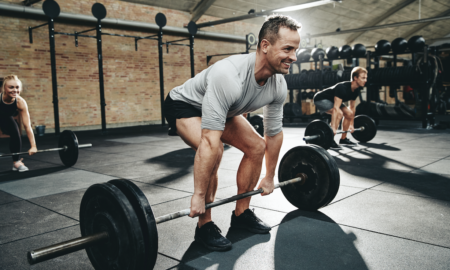
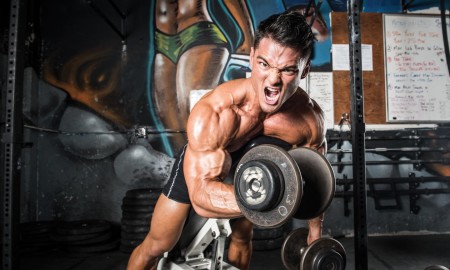

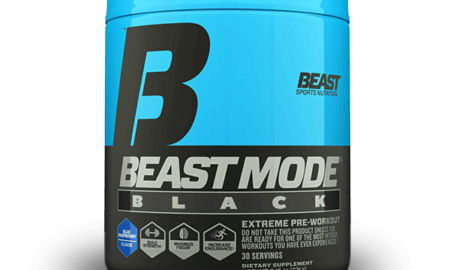
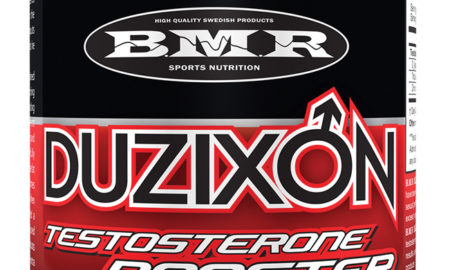
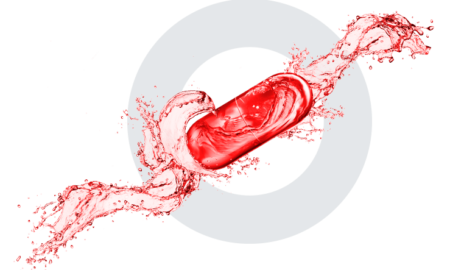

You must be logged in to post a comment Login